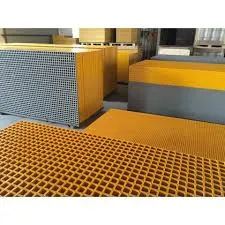
-
 Afrikaans
Afrikaans -
 Albanian
Albanian -
 Amharic
Amharic -
 Arabic
Arabic -
 Armenian
Armenian -
 Azerbaijani
Azerbaijani -
 Basque
Basque -
 Belarusian
Belarusian -
 Bengali
Bengali -
 Bosnian
Bosnian -
 Bulgarian
Bulgarian -
 Catalan
Catalan -
 Cebuano
Cebuano -
 China
China -
 China (Taiwan)
China (Taiwan) -
 Corsican
Corsican -
 Croatian
Croatian -
 Czech
Czech -
 Danish
Danish -
 Dutch
Dutch -
 English
English -
 Esperanto
Esperanto -
 Estonian
Estonian -
 Finnish
Finnish -
 French
French -
 Frisian
Frisian -
 Galician
Galician -
 Georgian
Georgian -
 German
German -
 Greek
Greek -
 Gujarati
Gujarati -
 Haitian Creole
Haitian Creole -
 hausa
hausa -
 hawaiian
hawaiian -
 Hebrew
Hebrew -
 Hindi
Hindi -
 Miao
Miao -
 Hungarian
Hungarian -
 Icelandic
Icelandic -
 igbo
igbo -
 Indonesian
Indonesian -
 irish
irish -
 Italian
Italian -
 Japanese
Japanese -
 Javanese
Javanese -
 Kannada
Kannada -
 kazakh
kazakh -
 Khmer
Khmer -
 Rwandese
Rwandese -
 Korean
Korean -
 Kurdish
Kurdish -
 Kyrgyz
Kyrgyz -
 Lao
Lao -
 Latin
Latin -
 Latvian
Latvian -
 Lithuanian
Lithuanian -
 Luxembourgish
Luxembourgish -
 Macedonian
Macedonian -
 Malgashi
Malgashi -
 Malay
Malay -
 Malayalam
Malayalam -
 Maltese
Maltese -
 Maori
Maori -
 Marathi
Marathi -
 Mongolian
Mongolian -
 Myanmar
Myanmar -
 Nepali
Nepali -
 Norwegian
Norwegian -
 Norwegian
Norwegian -
 Occitan
Occitan -
 Pashto
Pashto -
 Persian
Persian -
 Polish
Polish -
 Portuguese
Portuguese -
 Punjabi
Punjabi -
 Romanian
Romanian -
 Russian
Russian -
 Samoan
Samoan -
 Scottish Gaelic
Scottish Gaelic -
 Serbian
Serbian -
 Sesotho
Sesotho -
 Shona
Shona -
 Sindhi
Sindhi -
 Sinhala
Sinhala -
 Slovak
Slovak -
 Slovenian
Slovenian -
 Somali
Somali -
 Spanish
Spanish -
 Sundanese
Sundanese -
 Swahili
Swahili -
 Swedish
Swedish -
 Tagalog
Tagalog -
 Tajik
Tajik -
 Tamil
Tamil -
 Tatar
Tatar -
 Telugu
Telugu -
 Thai
Thai -
 Turkish
Turkish -
 Turkmen
Turkmen -
 Ukrainian
Ukrainian -
 Urdu
Urdu -
 Uighur
Uighur -
 Uzbek
Uzbek -
 Vietnamese
Vietnamese -
 Welsh
Welsh -
 Bantu
Bantu -
 Yiddish
Yiddish -
 Yoruba
Yoruba -
 Zulu
Zulu
Advanced Fiberglass Fan Solutions for Enhanced Efficiency and Performance in Various Applications
The Versatile World of Fiberglass Fans
In a world increasingly focused on efficiency and durability, fiberglass fans have emerged as an innovative solution for various industries. Offering a perfect blend of strength, lightness, and resistance to environmental factors, these fans are becoming essential in applications ranging from industrial to residential settings.
What is a Fiberglass Fan?
Fiberglass fans are ventilation devices constructed with fiberglass-reinforced plastic, a material that combines the lightweight properties of plastic with the tensile strength of glass fibers. This composite construction provides significant advantages over traditional metal or standard plastic fans. The inherent properties of fiberglass, such as resistance to corrosion, high temperatures, and chemical exposure, make these fans suitable for challenging environments.
Benefits of Fiberglass Fans
1. Durability One of the standout features of fiberglass fans is their exceptional durability. Unlike metal fans that can succumb to rust and corrosion, fiberglass fans can withstand exposure to harsh chemicals and moisture. This makes them ideal for use in agricultural, chemical, and marine environments.
2. Lightweight The lightweight nature of fiberglass fans allows for easier installation and maintenance. This is especially beneficial in applications where large fans need to be operated, as it reduces the stress on mounting structures and minimizes risks during installation.
3. Aerodynamic Efficiency Fiberglass fans can be designed for highly efficient aerodynamic performance. Their blades can be shaped to optimize airflow and energy consumption, providing the necessary cooling and ventilation while minimizing electricity costs. This is particularly important in industrial settings where energy efficiency is a priority.
fiberglass fan

4. Versatility Fiberglass fans are available in various designs, sizes, and configurations, catering to diverse air movement needs. From axial fans that move air along the axis of rotation to centrifugal fans that use a rotating impeller to create airflow, there is a fiberglass fan tailored for virtually any application.
5. Aesthetic Appeal In residential settings, the aesthetic appearance of fiberglass fans can complement a variety of decor styles. They are available in different colors and designs, allowing homeowners to select options that harmonize with their interior or exterior spaces.
Applications
Fiberglass fans are employed in a broad spectrum of applications. In industrial settings, they are often used for material handling, dust control, and ventilation in facilities where high humidity or chemical exposure occurs. Similarly, in agricultural environments, they facilitate airflow in barns and stables, maintaining optimal conditions for livestock and crops.
Moreover, fiberglass fans are gaining traction in the cooling and HVAC industry. They are utilized in HVAC systems for both residential and commercial buildings, providing efficient airflow and enhancing indoor air quality. Their lightweight and durable nature makes them a preferred choice for rooftop installations where weight considerations are critical.
Conclusion
Fiberglass fans are revolutionizing the way we think about ventilation and air circulation in various industries. Their combination of durability, efficiency, and versatility makes them an attractive choice for both industrial and residential applications. As we move toward a more energy-conscious world, the demand for innovative solutions like fiberglass fans is likely to increase, paving the way for improved environmental conditions and reduced operational costs. As technology continues to advance, we can expect to see even more applications and improvements in the design and functionality of fiberglass fans, solidifying their position as a staple in modern ventilation solutions.









